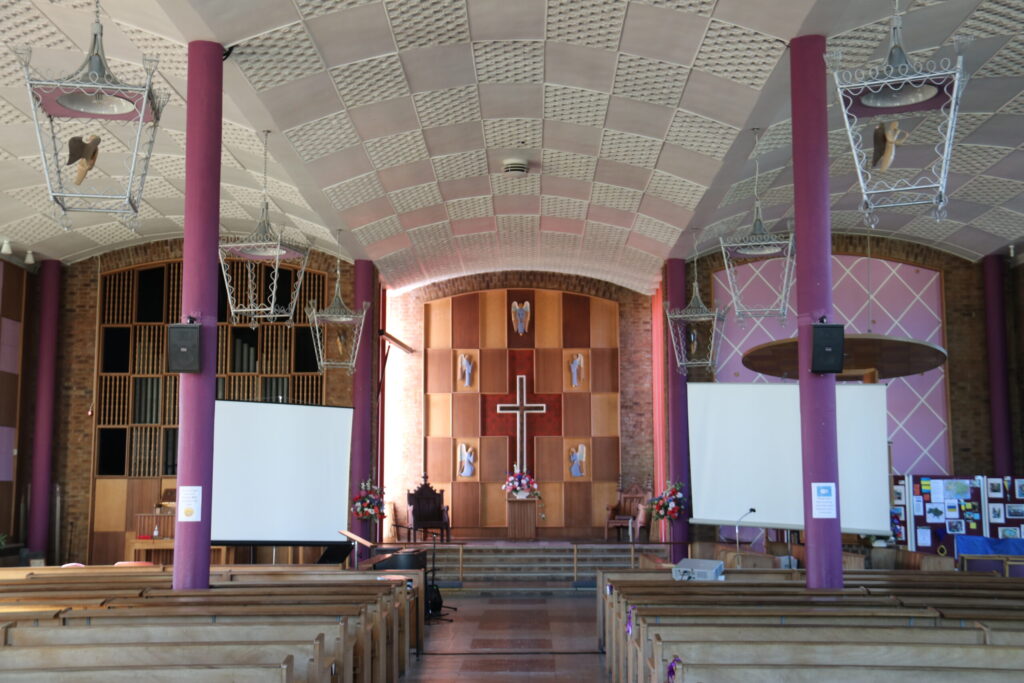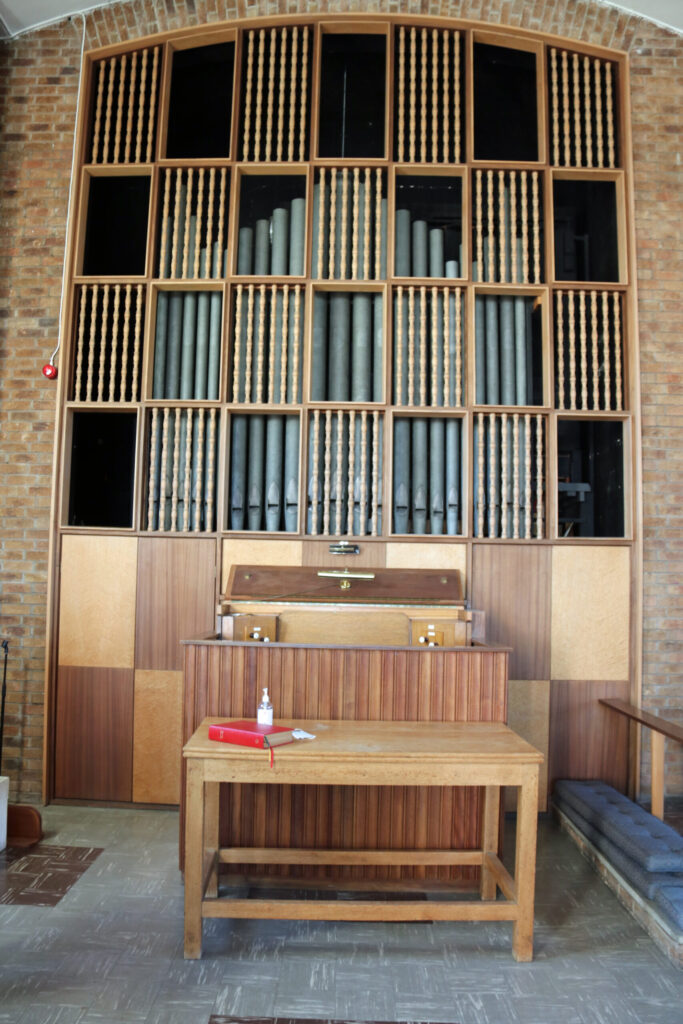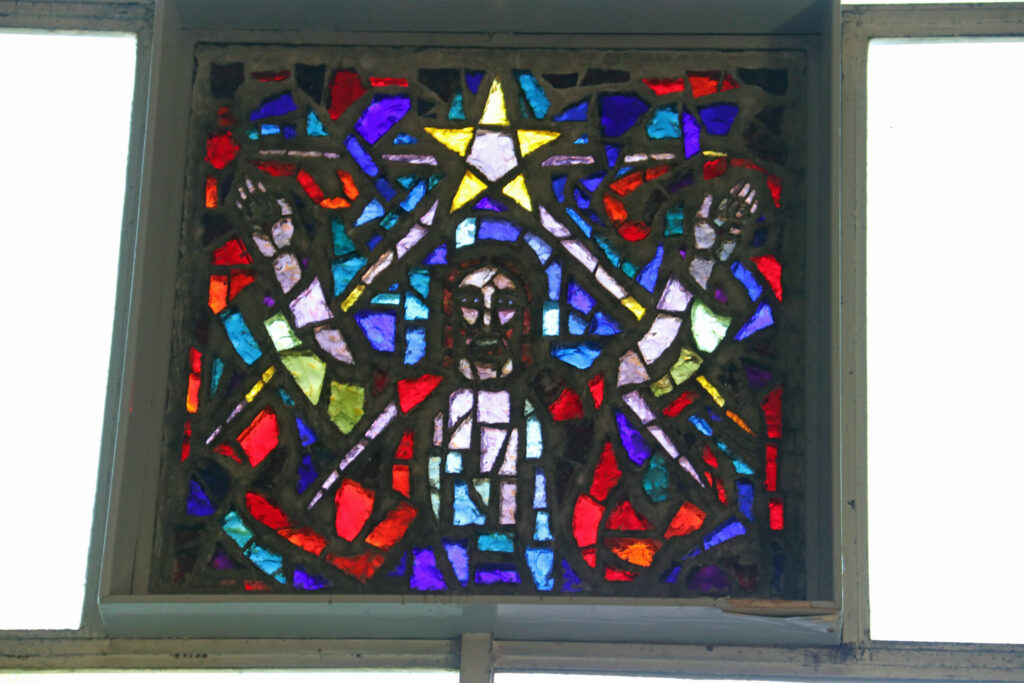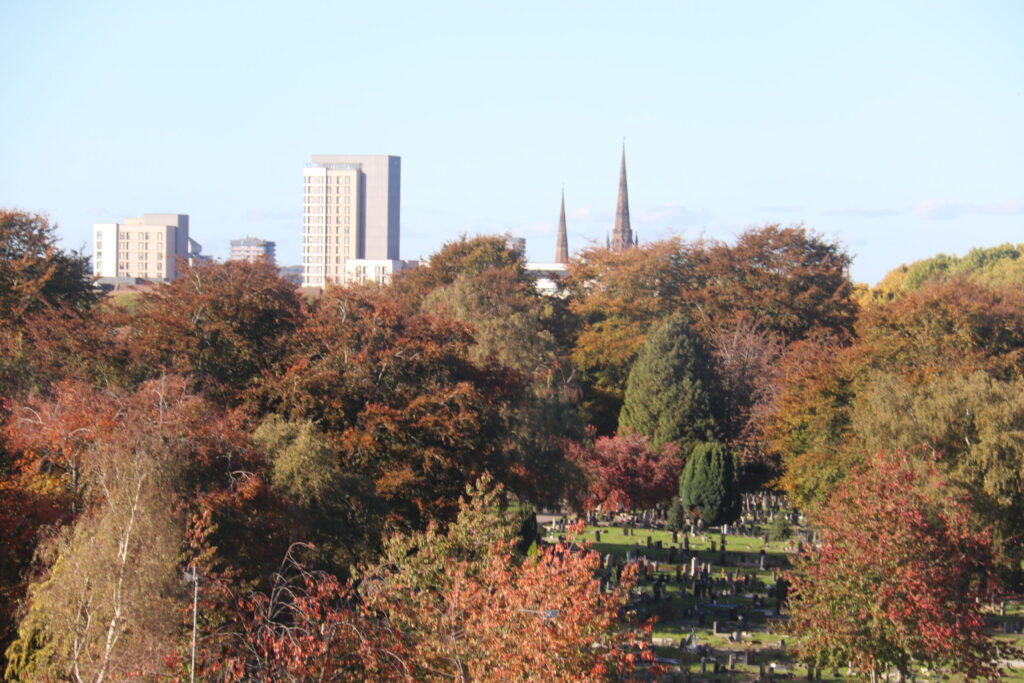This month the Coventry Society visited Christ Church in Frankpledge Road, Cheylesmore, courtesy of Reverend Arthur Woo.

The original Christ Church was built in 1832 on the site of the Franciscan monastery and using its medieval spire on what is now New Union Street. Unfortunately, the Church was destroyed during the blitz and the replacement Church was built in Cheylesmore.

The new Church was designed by Alfred H Gardner in 1953 and built between 1956 and 1958. It was listed in 1998 and the listing was recently raised to Grade II*.
The listing recognises the building as a high-quality example of post-war church building by the architect, Alfred H Gardner and especially for the exceptional survival and quality of its unusually vibrant scheme of interior decoration, incorporating a unified sculptural scheme by John Skelton and an early example of the dalle de verre stained glass technique by Pierre Fourmaintraux.


The building is a rare example of a church directly inspired by the design aesthetic that developed from the Festival of Britain of 1951. It is described as a striking example of post-war church rebuilding, symbolising the ambition of Coventry’s regeneration illustrating a period that marked a shift towards joyful, community worship. “It is perhaps the most ecclectic Anglican interior of its date, richly imaginative yet light-hearted, and whose whimsy makes a striking contrast to the church’s strong Evangelical tradition.”
The visit demonstrated the contrast between the merits of the architectural features that led to the building being listed and the architectural weaknesses of the design in meeting modern standards. There is no disabled access. There are huge areas of single glazed glass. There is little car parking. The church tower proved not suitable for the bells for which it was designed and the organ no longer works. The church hall has pronounced acoustic problems. As the building ages there is an increasing maintenance and renewal challenge.

As with many churches there is a declining and ageing congregation. This limits the available solutions to the sustainability problem. This is a “rock and a hard place” problem – the listed building can’t be demolished but its long term conservation depends on some significant changes that will generate the income needed to restore the building. Any ideas?
There are more photos on our flickr site.
